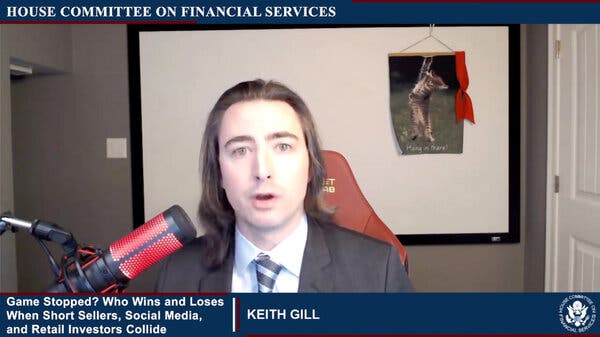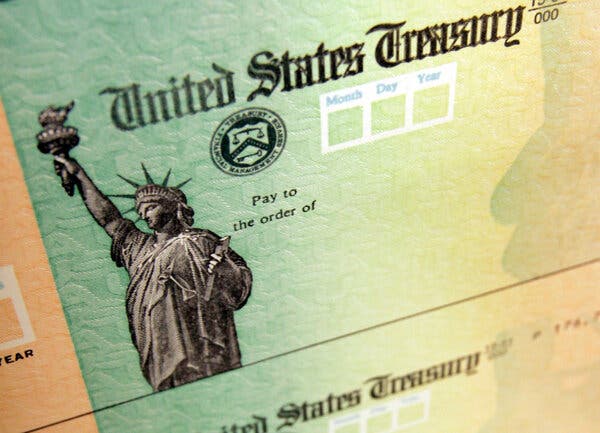The Federal Reserve is staring down a challenge that would have been all but unthinkable a year ago: With its policies set on emergency mode to bolster growth in the face of the pandemic’s shock, it must now navigate an economy that is expected to strengthen rapidly in the coming months.
Officials will release an interest rate policy decision and their first economic projections of 2021 at 2 p.m. on Wednesday, and they are virtually certain to leave borrowing costs unchanged at near zero.
But analysts and Wall Street investors alike are eager to see whether growing economic optimism will shake up the outlook for policy in the months and years ahead.
The Fed slashed interest rates to rock bottom a year ago as the pandemic shut down huge swaths of the economy. It has also been buying $120 billion in bonds per month, a policy meant to keep credit cheap and help the economy rebound from a virus that has thrown millions out of work.
Jerome H. Powell, the Fed chair, has been clear for months that officials expect to be patient in removing that policy help — a cautious tone that he is expected to maintain at a news conference on Wednesday.
“This is one of the most critical Fed meetings we’ve had in a while,” said Michelle Meyer, head of U.S. economists at Bank of America Merrill Lynch. “Markets are really paying attention, and they’re going to dissect everything he says.”
That’s because the economic backdrop is shifting. Coronavirus vaccines are fueling hopes for reopening parts of the service sector. A freshly signed stimulus package will pump $1.9 trillion into the economy, with an eye on preventing evictions, funneling cash to parents and putting $1,400 checks directly into bank accounts.
Against that improving backdrop, economists in a Bloomberg survey expect the Fed to increase rates twice in 2023, the news outlet reported. In December, they typically expected rates to remain on hold until 2024 or later.
As investors expect faster growth, higher inflation and a quicker-moving Fed, they have pushed up the yield on 10-year Treasury notes. That has weighed on stock indexes, which tend to fall when rates rise.
The Fed’s economic projections — which anonymously report officials’ forecasts for interest rates, unemployment, inflation and growth both through 2023 and in the longer run — could show a shift when they are released on Wednesday.
Wall Street will pay particular attention to the inflation forecast and the policy rate path. The Fed’s median interest rate forecast previously showed no rate increases over the next three years, but analysts expect that officials could now pencil in one move in 2023.
Wall Street has been paying close attention to the outlook for inflation in recent weeks. Key price indexes are expected to bounce back after weak readings last year, and some economists have warned that big government spending could keep them elevated.
That could put a spotlight on Federal Reserve officials’ inflation estimates, and on anything that Jerome H. Powell, the Fed chair, says about the outlook during his news conference after the central bank’s meeting on Wednesday.
The Fed is trying to use its policies to coax the economy back to full employment while lifting and stabilizing inflation, which has been slipping in recent decades. It wants to hit 2 percent annual price gains on average, and it has pledged not to raise rates from near zero until they are poised to hum along at a slightly faster pace for some time.
But some prominent onlookers have warned that the economy could overheat. They say inflation may jump well above the 2 percent average target, thanks to government outlays and booming demand in a reopening economy.
Fed officials have been consistently less concerned about that possibility, and will give an up-to-date snapshot of their own expectations in their first Summary of Economic Projections of 2021. The last set of estimates, released in December, showed inflation stabilizing at 2 percent.
“How much do they revise up inflation? That’s something I’ll be looking for,” said Seth Carpenter, chief U.S. economist at UBS and a former Fed employee.
Analysts broadly expect price gains to accelerate in the coming months for a mechanical reason: The data are about to lap very weak readings from last spring. The most closely watched inflation measures are compared against the same month a year earlier, a recipe for an automatic increase.
But Fed leaders have been clear that a short-lived bounce is not what they’re talking about when they say they want to see quicker increases.
“There’s a difference between a one-time surge in prices and ongoing inflation,” Mr. Powell said this month.

The House Financial Services Committee is holding its second hearing on the GameStop frenzy on Wednesday, with a range of experts expected to expound on what the saga says about the stock market’s plumbing.
The hearing appears likely to have a more wonkish tone than the committee’s first hearing on GameStop, which put a spotlight on Robinhood, the trading app at the center of a remarkable rally that sent shares of the struggling video game retailer up by over 1,600 percent in January,
Witnesses will include stock exchange officials, market analysts, former regulators and academics. Prepared testimony suggests the witnesses will focus on what — if any — deficiencies in the American stock trading system were revealed by the surge of trading in GameStop.
Sal Arnuk, co-founder of trading firm Themis Trading, plans to spotlight the growing role of payment-for-order-flow, where retail brokerage houses such as Robinhood channel customer orders to specific trading firms in exchange for payments.
“These practices create a massive incentive for such brokers to sell their clients orders to sophisticated trading firms uniquely tooled to profit off of them,” Mr. Arnuk will say, according to preliminary testimony released by the House committee. “This is a needless conflict that can harm retail investors, and it degrades the integrity of the market ecosystem as a whole.”
Other witnesses, such as Alexis Goldstein, a senior policy analyst at Americans for Financial Reform, will underscore the growing dominance of the trading firms that pay retail brokerages to execute their orders.
Two major market-makers, Citadel Securities and Virtu Financial, “execute a larger volume of U.S. stocks than the New York Stock Exchange,” she said in prepared testimony, urging regulators to look at whether their growth has worsened the prices that are available to investors on the public exchanges.
The hearing is to begin at 10 a.m. Other participants include Michael Blaugrund, chief operating officer of the New York Stock Exchange; Vicki L. Bogan, a Cornell University professor who focuses on the financial and investment behavior of households; Dennis Kelleher, the chief executive officer of Better Markets, which advocates for market reforms; and Michael Piwowar, executive director of the Milken Institute Center for Financial Markets and a former S.E.C. commissioner.

The stimulus money promised under the American Rescue Plan will hit the bank accounts of many Americans on Wednesday — the first official payment date — though some financial institutions chose to make the cash available to people even before it arrived from the government.
Not everyone eligible to receive a payment will get one on Wednesday, though. Additional rounds of payments will be made in the coming weeks, including for people who will receive theirs by mail as a check or debit card. You can check the status of your payment with the Internal Revenue Service’s Get My Payment tool.
Payments top out at $1,400 per person, including children and adult dependents. To qualify for the full $1,400, a single person must have an adjusted gross income of $75,000 or below. For heads of household, adjusted gross income must be $112,500 or less, and for married couples filing jointly, that number has to be $150,000 or below. Partial payments are available to people who earn more, but the amounts fall quickly.
The payments are calculated using the most recent information on file with the I.R.S., which could be your 2019 tax return if you haven’t yet filed for 2020.
If you’re newly eligible for a payment based on your 2020 income but haven’t yet filed your return, the law allows the Treasury Department to continue payments until September. If you don’t get one during that period, you can claim what you’re owed when you file your 2021 taxes.
The problems of Greensill Capital, a financial firm with ties to SoftBank and Credit Suisse, deepened Tuesday after its German unit entered insolvency proceedings.
Germany’s banking regulator, known as BaFin, said Tuesday that a judge had granted its request to open insolvency proceedings for Greensill Bank in Bremen. BaFin also formally determined that Greensill Bank was not able to repay all of its customers’ deposits, a step that allows depositors to receive compensation from public and private insurance funds.
The insolvency of the German unit was expected after Greensill Capital, which provides financing to companies and has been advised by former Prime Minister David Cameron of Britain, filed for a form of bankruptcy protection in Britain last week.
Credit Suisse acknowledged on Tuesday that it was likely to suffer losses from a loan it had made to the firm. It said that it had received $50 million from the administrator of Greensill Capital’s assets in Britain but that $90 million of the loan was outstanding.
Credit Suisse’s asset management unit oversaw $10 billion in funds that Greensill packaged based on financing it provided to companies. The loans allowed companies to stretch out payments to suppliers. Credit Suisse has returned $3 billion in cash to investors in the funds and said it was working to recover more money.
Credit Suisse said Tuesday that the funds’ managers “intend to announce further cash distributions over the coming months.” The bank has not specified what losses, if any, investors in the funds might ultimately suffer.






